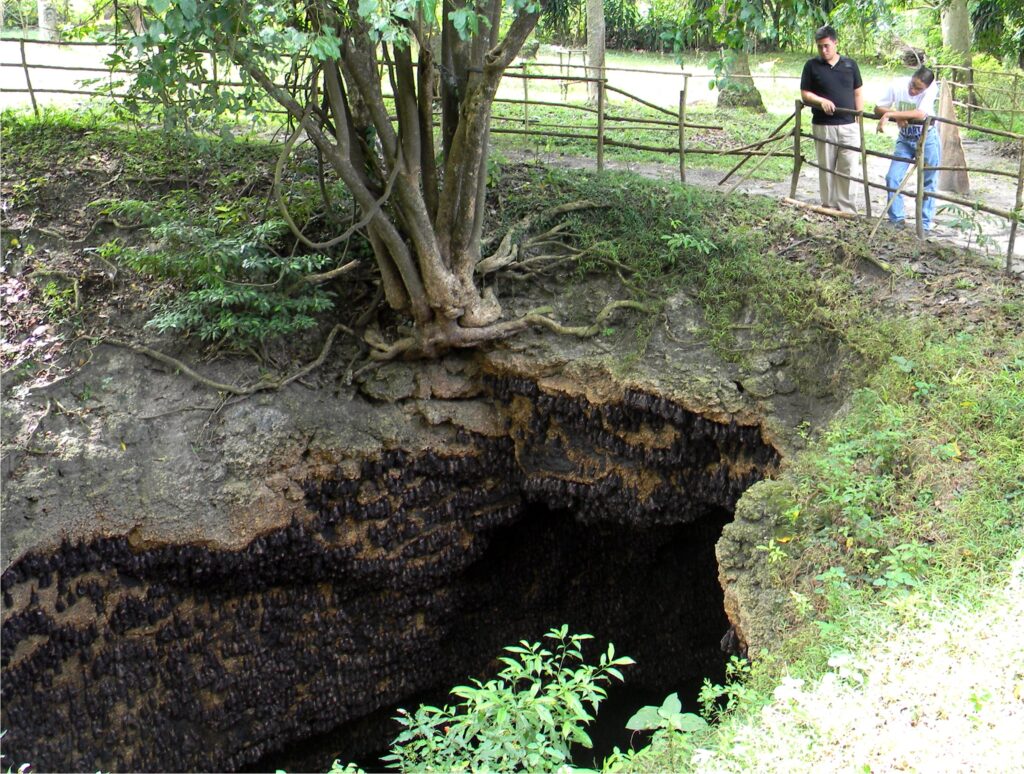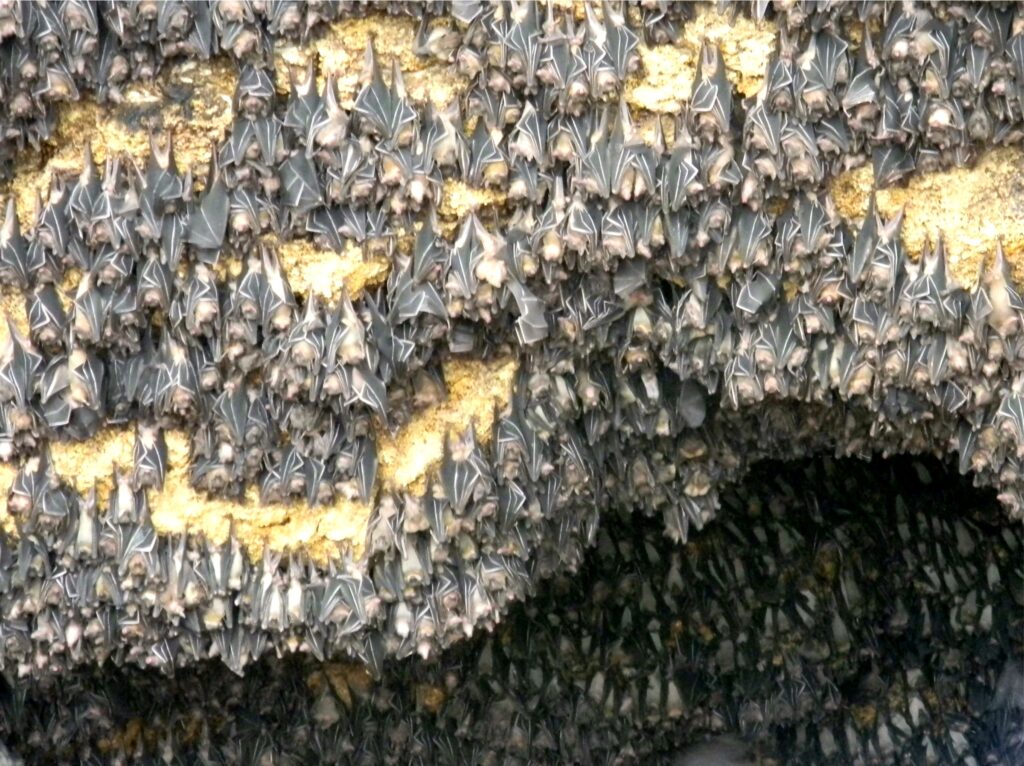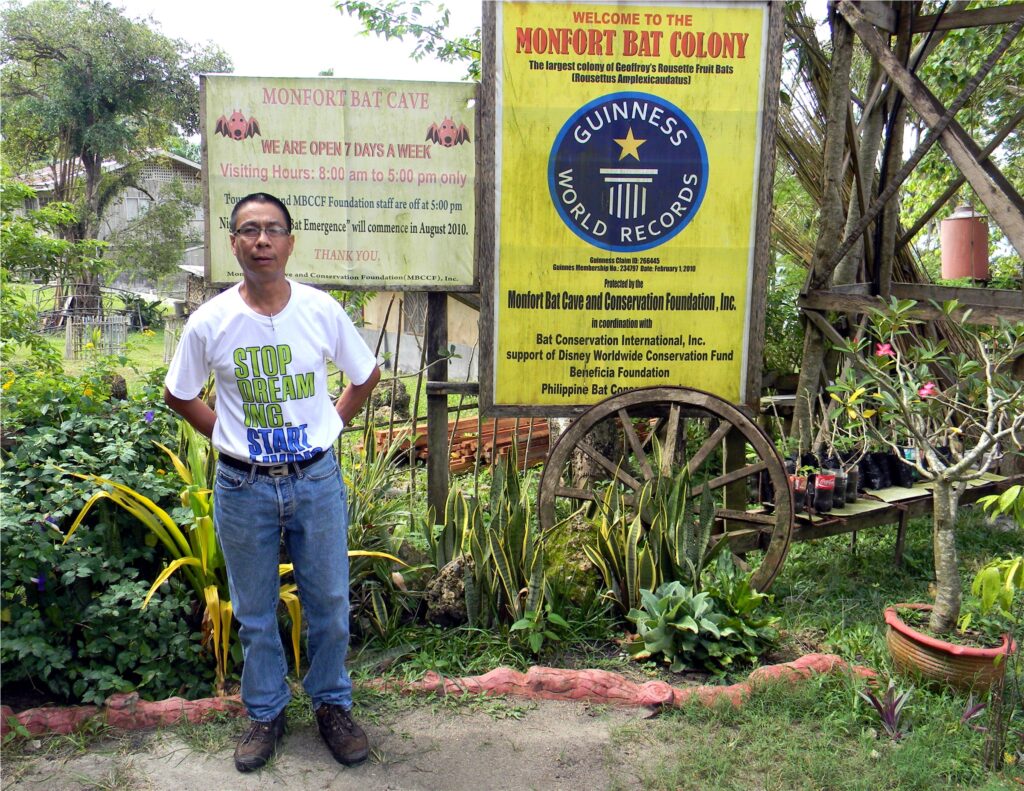Text and Photos by Henrylito D. Tacio
Bats are among the most feared creatures on this planet. They are carriers of rabies, one of the deadliest diseases known to man. In the United States, bats are responsible for 7 out of 10 rabies deaths, according to the US Centers for Disease Control and Prevention.
As creatures of the nights, bats had long been associated with witchcraft and demons, both in fable and art. But it wasn’t until Bram Stoker wrote his classic novel, Dracula, in 1897 that bats were linked with vampires for the first time.
While it is true that bats are carriers of the rabies virus, there are other animals that can transmit the disease too. In fact, in up to 99% of cases, domestic dogs are responsible for rabies virus transmission to humans, according to the World Health Organization (WHO).
It is also true that vampire bats suck blood (they actually lap it up rather than suck); there are only three species that partake in the consumption of blood. In fact, there are over a thousand other species that consume insects and fruits. And no, bats cannot transform themselves into human vampires. It happens only in the movies and in fiction.
“Throughout Latin America, vampire bats are believed to cause numerous outbreaks of bovine rabies each year, resulting in high economic losses for ranchers,” write Jacqueline Bellwood and Patricia Morton, science director and director of education, respectively, of Bat Conservation International.
“Negative public perceptions of bats are pervasive as a consequence of the public’s lack of understanding about their economic and ecological roles,” said Krizler C. Tanalgo and Alice Catherine Hughes, who conducted a study on the potential of bat-watching tourism in raising public awareness towards bat conservation in the Philippines.
The Philippines is home to over 78 species of bats, the majority of which are found nowhere else in the world. These include 25 fruit-eating bats and 53 species of insectivorous bats. Fruit bats primarily live in the forests, while insect bats can be found in caves.

Bat cave 
Fruit bats
The world’s largest bats – the giant golden-crowned flying fox fruit bat (Acerodon jubatus) and the world’s smallest bats – the Philippine bamboo bat (Tylonycteris pachypus) – can be found in the Philippines. The stripe faced fruit bat (Styloctenium mindorensis) is the world’s most recent fruit bat species discovered in Mindoro Island in 2007
Benefits
There are several reasons why bats need to be protected rather than feared and killed. The Biodiversity Management Bureau (BMB), a line agency of the Department of Environment and Natural Resources (DENR), cites the following uses of bats:
Pest control: An insectivorous bat can eat insects equivalent to half of their body weight in one night, including pests that cause damage to agricultural crops and mosquitoes. Bats are an ally against dengue fever and malaria.
Fruit pollination: Fruit bats feed on fruits, pollen, and nectar. In doing so, they help in pollinating plants. In Davao Region, bats are key pollinators of the durian and banana; hence they are important to the local economy.
Forest regeneration: Fruit bats are touted as “silent planters.” They disperse seeds of forest plants, thereby helping in the natural regeneration of forest for free. A large amount of money is saved from this free service of bats.
Recreation and tourism: The exit of millions of bats from caves at dusk and the large colonies of flying foxes (large bats) hanging at roosting trees are a sight to behold and serve as an attraction for ecotourism areas. In addition, bat-watching could be a tool to counter the negative public perception about only flying mammals.
Zoonotic diseases
The emergence of zoonotic diseases has steadily increased in recent years. Studies show that 75% of these zoonotic diseases can be attributed to pathogens with origins in wildlife reservoirs.
In particular, bats are recognized as important reservoirs for zoonotic viruses, including paramyxoviruses (example: Henipaviruses), filoviruses (Ebola and Marburg viruses), and coronavirus (COVID-19, SARS, and MERS-CoVs) that affect both human beings, livestock, and other wildlife species.
The BMB urges Filipinos to protect bats from preventing the transmission of zoonotic diseases. One way is not to catch or eat bats. “They are not game nor food animals,” the bureau reminds.
Another recommendation: “Refrain from disturbing bats and their cave and forest habitats to keep them away from human settlements and avoid possible interaction with people and livestock.”
Right now, some Filipino scientists are studying bats in order to prevent another pandemic from happening. “What we’re trying to look into are other strains of coronavirus that have the potential to jump to humans,” explained ecologist Phillip Alviola, the leader of the group, who has studied bat viruses for more than a decade.
“If we know the virus itself and we know where it came from, we know how to isolate that virus geographically,” Alviola was quoted as saying by Rappler.
Republic Act 9147
Like other endangered fauna, it is illegal to possess, catch, kill, or trade bats in the Philippines. Republic Act No. 9147 or the Wildlife Resources Conservation and Protection Act of 2001 prohibits doing all those.
Penalties for these crimes range from the imprisonment of between 10 days and 12 years and/or a fine of one thousand pesos to one million pesos, depending on the nature of the offense and whether the wildlife species are threatened.
Last October, Executive Director Theresa Mundita Lim of the ASEAN Centre for Biodiversity praised the efforts of the Philippine authorities in accosting suspected wildlife poachers and the seizure of wrinkle-lipped bats in a protected area in Bulacan.
Dr. Lim, who was the former BMB head, warned the public against the poaching of bats. “They are known key sources of diseases that can spread to humans and lead outbreaks, and even pandemics,” she warned.
DENR reported that more than 6,000 wrinkle-lipped bats (Chaerephon plicatus) worth over P90,000 were seized during an operation in Biak-na-Bato National Park (BNBNP). The joint operation was carried out by the DENR-Community Environment and Natural Resources Office, the Philippine National Police (PNP), and the National Anti-Illegal Logging Task Force in BNBNP.

“One of the many valuable lessons we can derive from the COVID-19 pandemic is the importance of keeping wildlife in their natural habitats to reduce the risks of outbreaks and pandemics,” Lim said, adding that the seized bats belong to insectivorous species, which can control the population of insect crop pests.
Tourism
The Island Garden City of Samal, which has a total land area of 30,130 hectares, is home to millions of bats. The colony can be found in a 23-hectare protected area on a property owned by Norma Monfort in barangay Tambo, Babak District.
“I have never seen such an immense number of bats,” says Roy C. Alimoane, who recently visited the place. “The caves are overflowing with bats that are cramped very closely together hanging upside down, coating the large walls of the caves. Some are continuously flying, while several others are seen clinging out in the open so close to the ground.”
When it was first discovered, about 1.8 million bats resided in the five caves – to a density of 645 bats per square meter. The huge number made it to the Guinness Book of World Records in 2010 as the biggest colony of Geoffrey’s Rousette Fruit Bat in the world.
“Samal has about seventy caves, which used to be inhabited by these fruit bats,” says Monfort, founder, and president of the Monfort Bat Cave and Conservation Foundation. “Unfortunately, most of these caves are now empty due to irresponsible hunting and destruction of their habitats.”
Had it not been for the intense conservation efforts of Monfort, together with the support of the residents and the local city government, and in collaboration with several key organizations, the colonies might have been totally destroyed.
In January 2011, an American cave-mapping expedition stumbled upon an unusually high number of pregnant bats in the Monfort bat colony. The bat species do not usually give birth in the first month of the year, making the discovery a “big surprise” and forcing the scientists to halt their mapping project, Monfort reports.
The cause of the bat baby boom is unknown. However, Monfort suspects one factor may be that the cave is protected from humans as an ecotourism site, which allows their numbers to grow.
In 2011, Monfort was honored as the “Disney Worldwide Conservation Fund Conservation Hero.” She was recognized as one of the “extraordinary individuals who are passionate about protecting animals and habitats in areas of critical concern.”
Winning the award, she said, means helping further bat conservation in the country and elsewhere. In her letter to her friends, she wrote: “That I have been given this recognition is simply signaling that more work lies ahead for me using this ‘tool’ and putting it into good use because the problem we all face together is climate change. Let’s all learn, appreciate, and respect the invaluable work of bats as major agents of reforestation. There is so much to be accomplished that I plan to leave behind for the children of the world….”
Known scientifically as Rousettus amplexicaudatus, fruits are less appreciated and sometimes misunderstood creatures. But unlike the feared vampire bats, they are also good pollinators, says Monfort, whose family has owned the property for more than a hundred years.
In fact, these bats are said to be the main reason for the abundance of durian fruits in the nearby city of Davao. Some experts believe bats are important to the general health and existence of the rainforest: more than 70 percent of the trees in the rainforest currently exist because bats pollinate, distribute seeds and eat otherwise harmful insect pests.
Fruit bats are also a good source of guano, one of Mother Nature’s most effective natural fertilizers. According to Monfort, a kilo of guano fetches a price of US$200!

